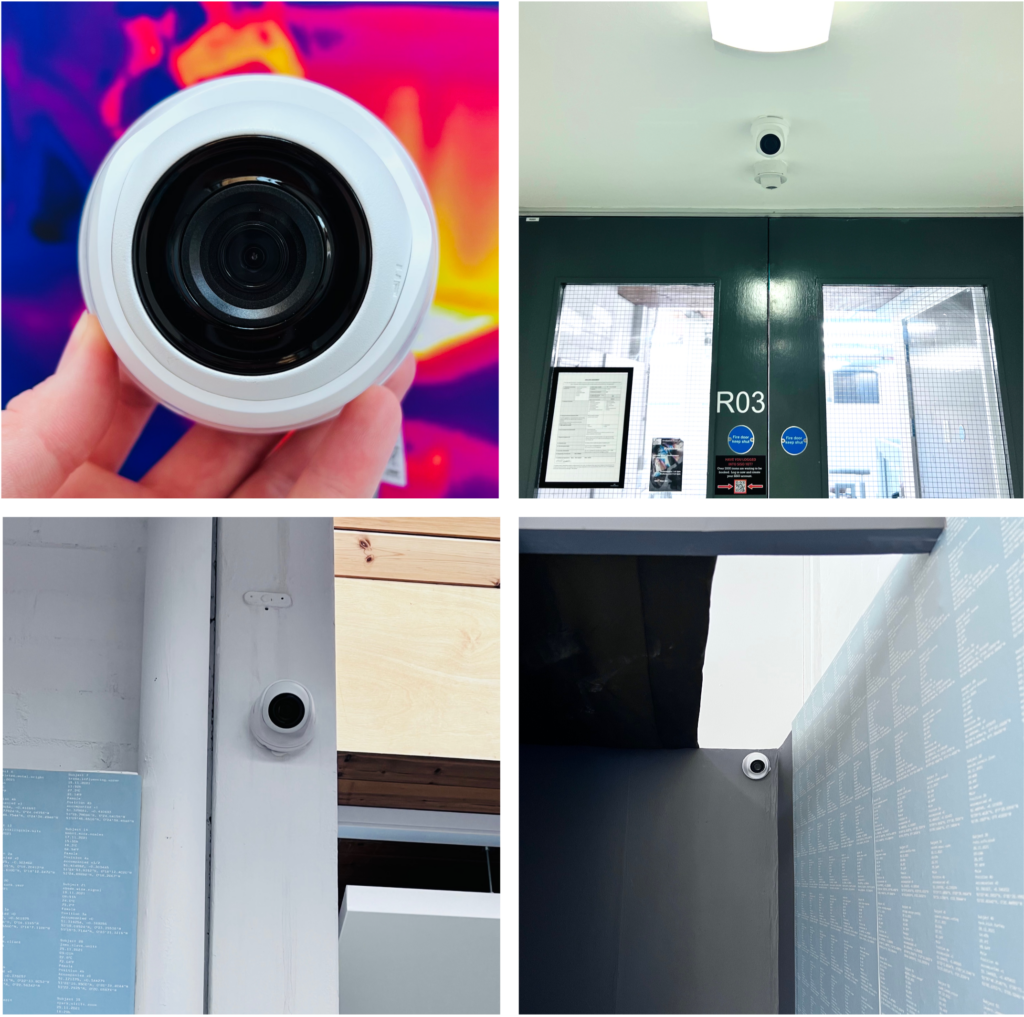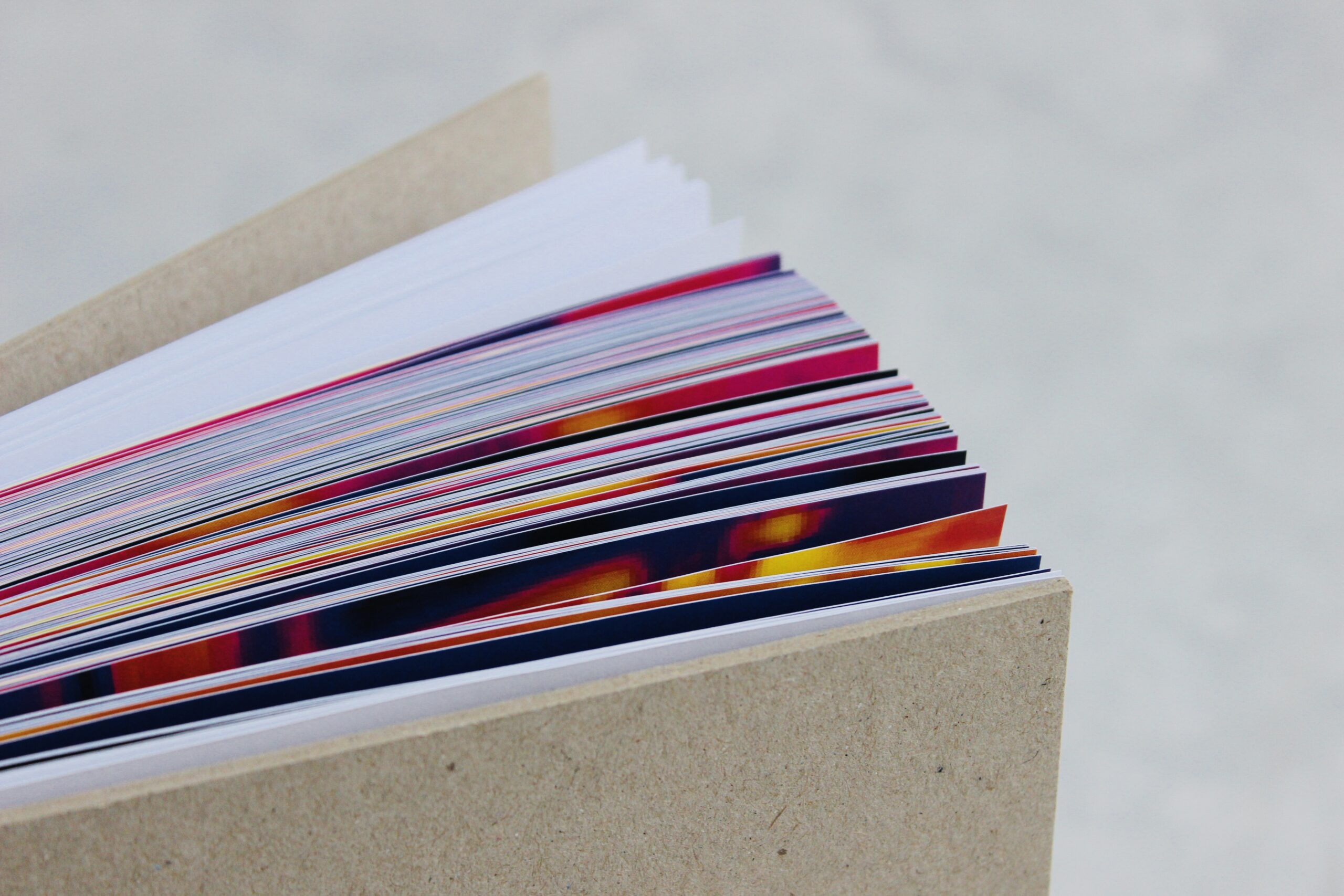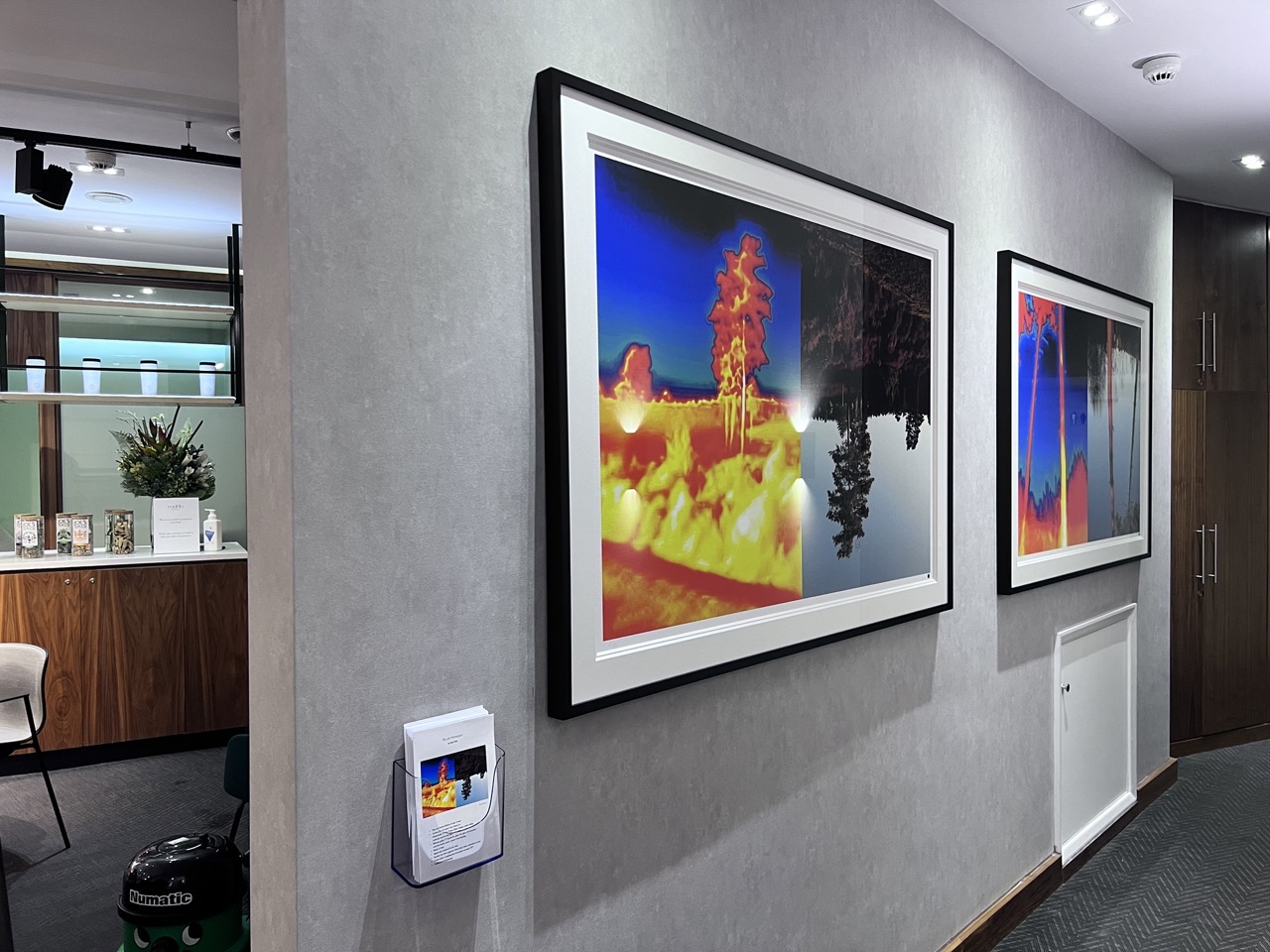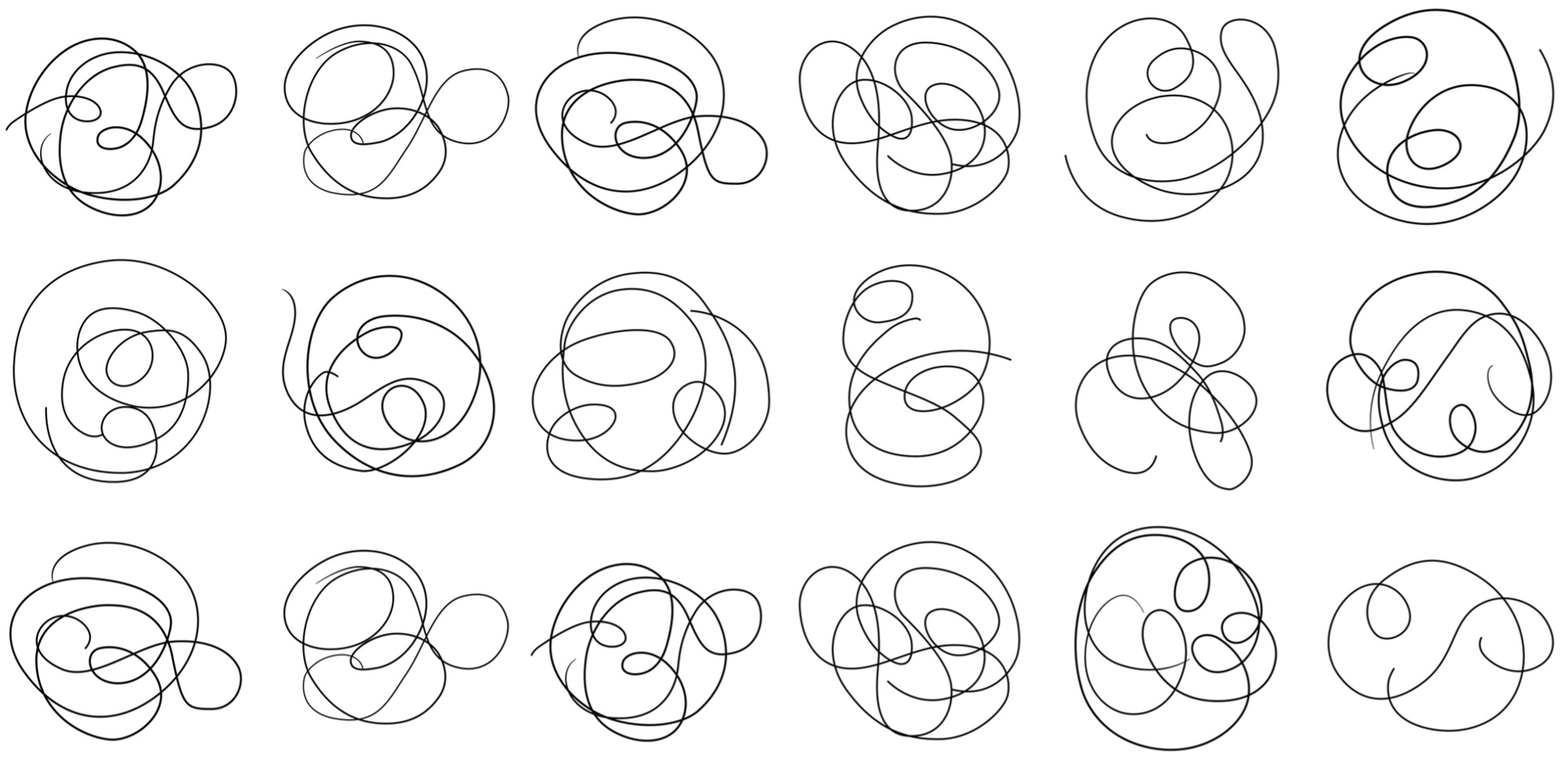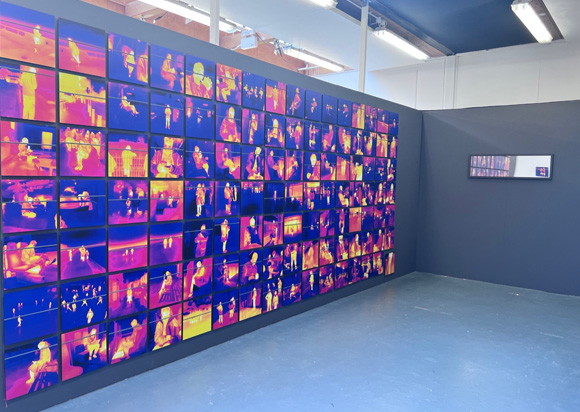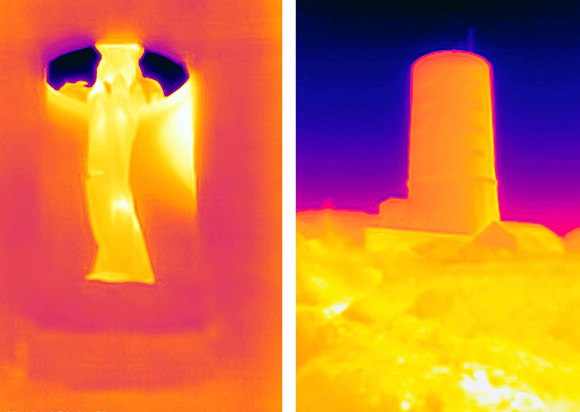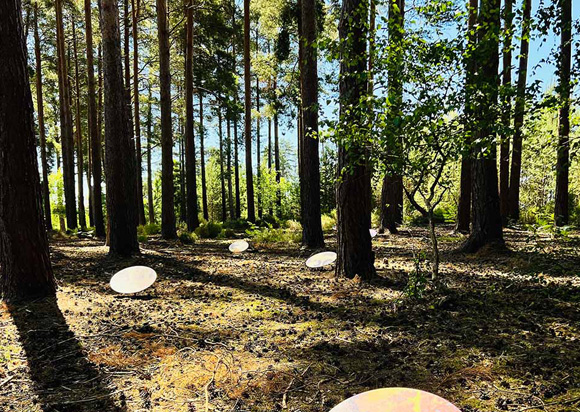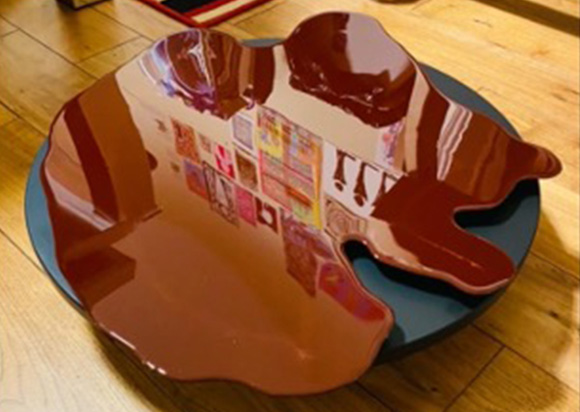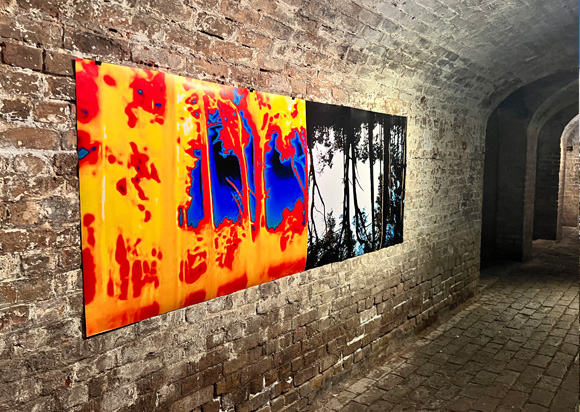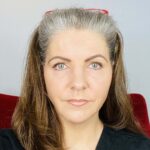
Stef Will
• 23 September 2022
Enter the hidden viewing station
In my last blog post I spoke about the images themselves, including the origin of the grey bars, in ‘Untitled (111 Subjects)’. Today, I would like to give you some background information about the wider installation, going beyond the images.
All far-infrared photographs are displayed in square format, referencing social media aesthetics, and thus alluding to the mass (self-) surveillance via global social media corporations. The square format also allows curation in the meditative regularity of a perfect grid, which, together with the sea of surveillance data on the opposite wall, may signal crisis via repetition. The morse-code like fluctuations between presence and absence in the geometric grid may also allude to pulsing undulations between actuality and potentiality, which I find an interesting concept.
The thermal images, dye-sublimated onto aluminium, are seemingly floating in space, hovering just in front of the wall, commenting on the fact that surveillance data is nowadays floating in the digital ‘cloud’, a far superior method of keeping track of the population, compared to the brown-backed paper folders of say the STASI (former communist East Germany’s ‘Ministry for State Security’).
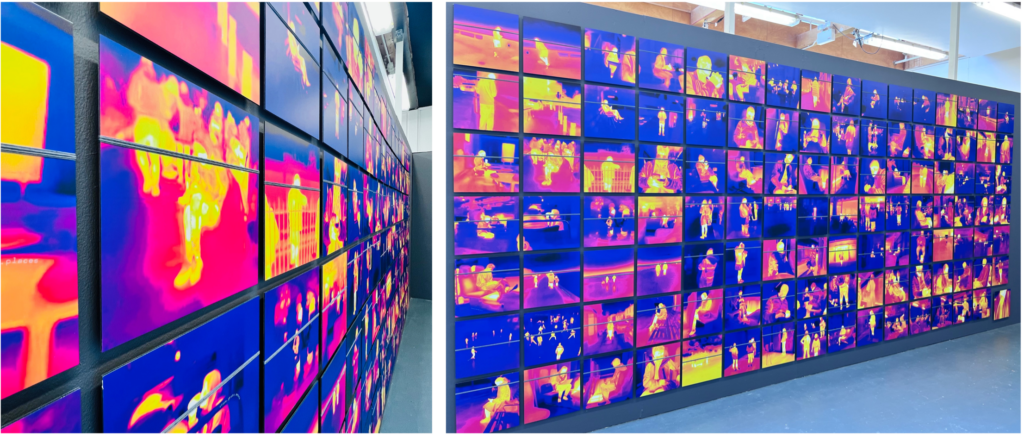
In my last blog post, I mentioned the three words hidden in each image, which encode the geolocation each subject was encountered in during my three-months surveillance operation. However, in addition to finding them within each image, the 3-word-codes (as well as other surveillance data collected), are also curated to cover the entire opposite wall in the installation. Visually quieter, an institutional interpretation set against the cacophony of the loud thermal image grid on the opposite wall, yet in their unremitting repetition contributing to the viewer’s feeling of overwhelm and dread. They may remind of scribbles or notes on prison walls, albeit in a more formal, geometric pattern. In addition to this, the 3-word-codes can also be heard as an unnerving whisper throughout the exhibition, read out by a (perceived) voice of authority and trust – a male BBC newsreader.
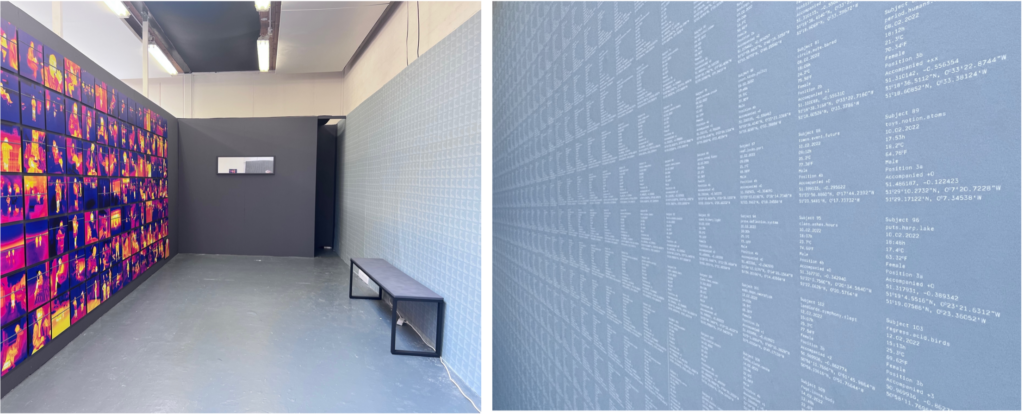
A simple grey bench perched against the wall, one you may see in corridors of institutions like the police, asks the viewer to sit, as they are coerced into (slow-) viewing the large grid of surveillance images, effectively becoming a peerveillance ‘spy’ (or voyeur?) themselves – with the sheer number of images as well as their curation contributing to the air of depersonalisation and oppression.
And seeing their own eyes look back at them via the reflection in the mirror at the far end of the room, makes the viewer conscious about watching and being watched as they enter the space. However, the line between watching and being watched blurs even more, as they discover and step behind the double wall holding the mirror, to find themselves in a dedicated viewing station, resembling a bird hide, where they can surreptitiously watch other visitors in concealment behind the wall – through what turns out to be a one-way-mirror. This reminds me of Merleau-Ponty quote, “the enigma derives from the fact that my body simultaneously sees and is seen. That which looks at all things can also look at itself and recognize in what it sees the ‘other side’ of its power of looking … inherence of the seer in the seen”.
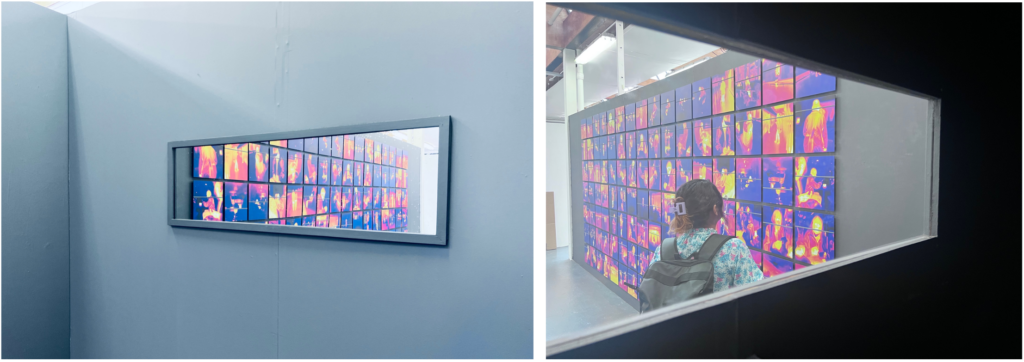
To allow the hidden observer to get an even more comprehensive look at his fellow citizens, the latter is guided towards the one-way-mirror, and therefore the secret watcher, via a blood pool on the floor, seeping out from underneath the wall. In addition to serving as a draw for visitors (and therefore commenting on coercion), this blood pool is also intended to trigger an uneasy sense of alarm (‘blood in the streets’), and as a symbol for physical embodiment serves as a meditation on what it means to be alive and in body. When creating this blood pool from pigments and resin, a few drops of the my own blood are always added to activate the concoction in ritualistic manner – a spell like gesture to complete the alchemic act.
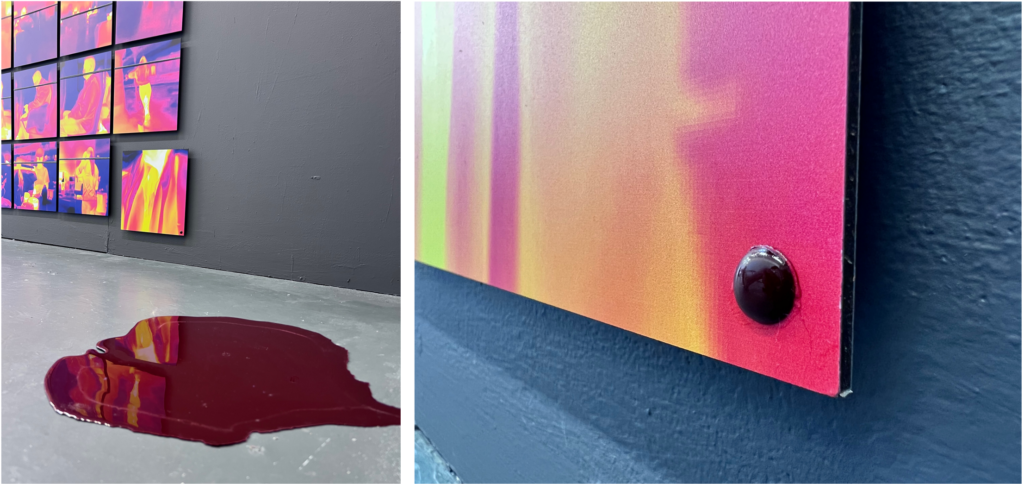
Referencing blood’s connection to identity, there is also a drop of ‘blood’ on image number 112, an image that sits slightly separate from the other 111. For subject 112 is not an ordinary surveillance subject – image 112 is a thermal self-portrait of myself, and the blood serves both as a symbolic gesture of protest against the current global abuse of (bio-) surveillance and state control, but also as an artist signature, blood as the ultimate mark of identity.
Subject 112 is also Subject Zero, as by exposing the other subjects’ whereabouts, I effectively revealed my own movements and routines over the surveillance time frame. The line between watching and being watched once more blurs. To further contemplate this problematic concept, the art installation also includes several (controversial Chinese HIK vision brand) CCTV cameras, dotted around the wider exhibition space (below seen at the University, where this art installation was exhibited as part of my MA Fine Art Graduation Show), in order to raise questions about privacy and control.
As the original observer becomes Subject Zero, and the viewers are being watched while watching -an experience shared with other strangers in the space- the question arises: who are the real subjects in this work?
